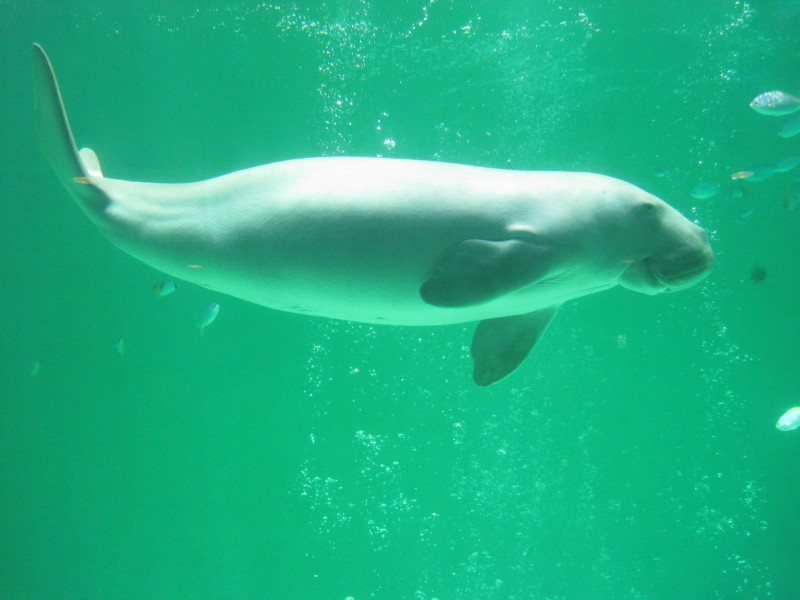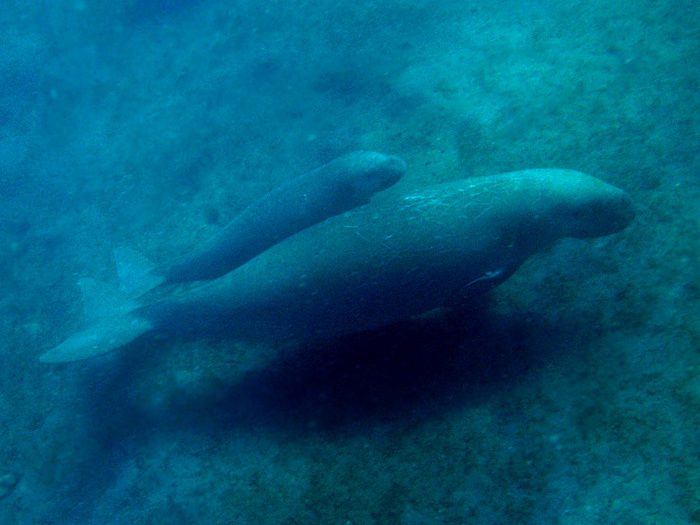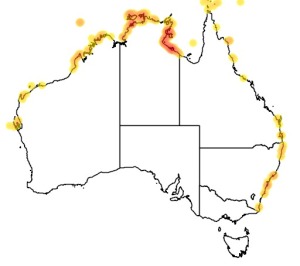Colours
Distinguishing features
The dugong's body is large with a cylindrical shape that tapers at both ends. It has thick, smooth skin that is a pale cream colour at birth, but darkens dorsally and laterally to brownish-to-dark-grey with age. The colour of a dugong can change due to the growth of algae on the skin.
The body is sparsely covered in short hair, a common feature among sirenians which may allow for tactile interpretation of their environment. These hairs are most developed around the mouth, which has a large horseshoe shaped upper lip forming a highly mobile muzzle. This muscular upper lip aids the dugong in foraging.
Bones in the forelimb can fuse variously with age.
The dugong's tail flukes and flippers are similar to those of dolphins. These flukes are raised up and down in long strokes to move the animal forward, and can be twisted to turn. The forelimbs are paddle-like flippers which aid in turning and slowing. (Wikipedia)
Size
- Up to 300 cm (Length of specimen)
Depth range
- Up to 37 m
Synonyms
Distribution
Distribution and habitat preferences
Dugongs are found in warm coastal waters from the western Pacific Ocean to the eastern coast of Africa, along an estimated 140,000 kilometres of coastline between 26° and 27° degrees to the north and south of the equator. Their historic range is believed to correspond to that of seagrasses from the Potamogetonaceae and Hydrocharitaceae families.
Dugongs are generally found in warm waters around the coast with large numbers concentrated in wide and shallow protected bays. Large numbers also exist in wide and shallow mangrove channels and around leeward sides of large inshore islands, where seagrass beds are common. They are usually located at a depth of around 10 m although in areas where the continental shelf remains shallow dugongs have been known to travel more than 10 kilometres from the shore, descending to as far as 37 metres, where deepwater seagrasses such as Halophila spinulosa are found. (Wikipedia)
Web resources
References
- McKenzie, L.J., W.J. Lee Long and E.J. Bradshaw (1997). Distribution of seagrasses in the Lizard Island Group - a reconnaissance survey, October 1995, CRC Reef Research Centre, Technical Report, 14. LIRS catalog number 476.





